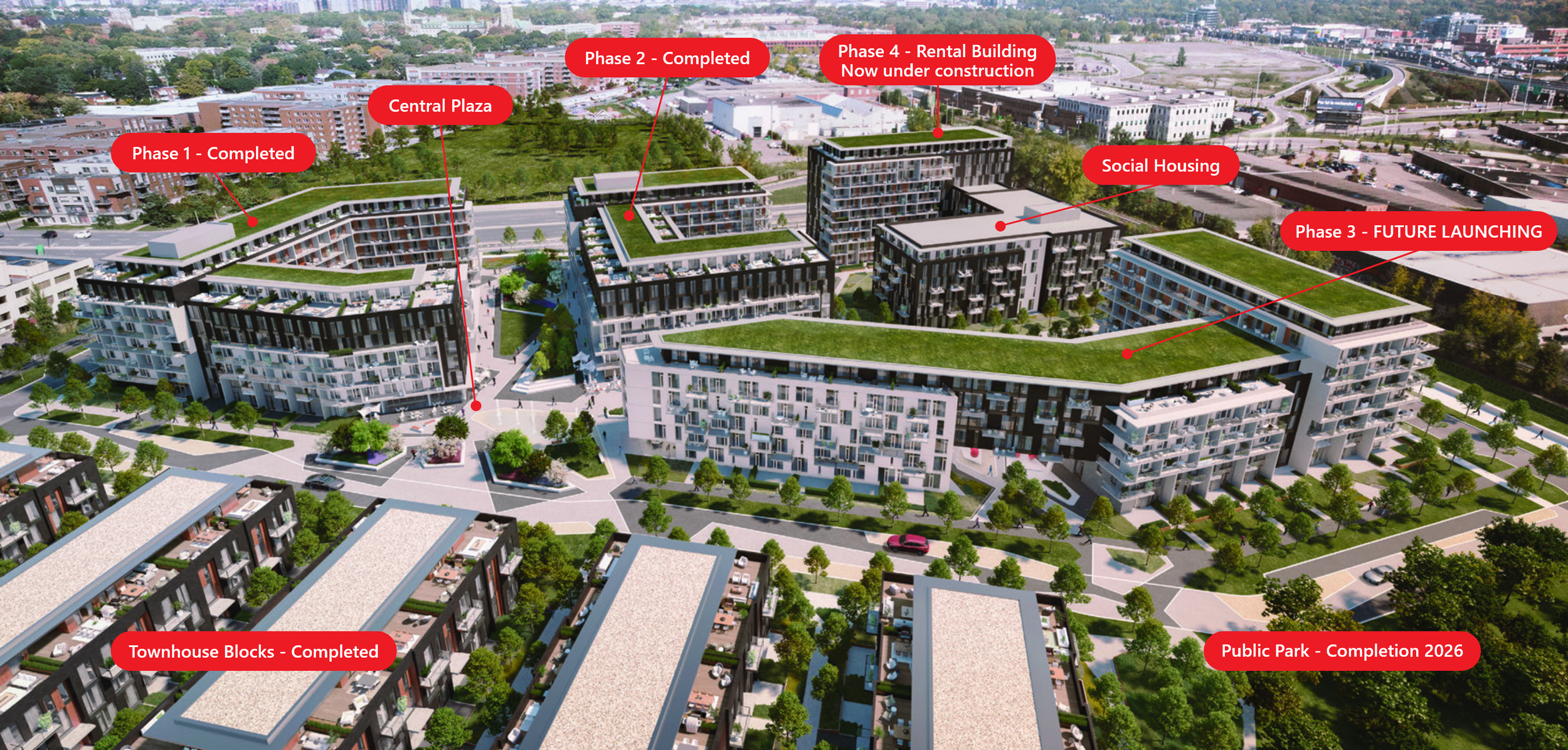
Master planned for a “complete community”
Cité Midtown is more than just a collection of buildings. It’s the culmination of many years of work by forward-thinking planners, architects, engineers and developers to design a modern, pedestrian-oriented community. A 13 acre LEED ND* neighbourhood of mid-rise buildings and townhouses, services and amenities, all atop underground parking, plus a “shared street”, two acre park, outdoor pool and edible landscapes. Cité Midtown has been meticulously planned to be a “complete community” of the future.
Unsurpassed design
Cité Midtown is for people who value design - architectural design, landscape design, and interior design. All three come together to create a community unlike any other in Montreal.
One of Quebec’s first LEED ND neighbourhoods
Cité Midtown is being designed to be one of the first LEED ND projects in Quebec. Importance is placed on providing safe and comfortable pedestrian and cyclist connections throughout the neighbourhood and linking to the Du Collège Metro station. Residents of Cité Midtown will benefit from an extensive network of public and green spaces, publicly accessible pedestrian pathways, a pedestrian plaza with access to local services and amenities, a large new public park and abundant landscaping throughout. Additionally, a “shared street” that runs through the neighbourhood has been designed to allow for safe movement and a variety of activities. The project has also been designed to be energy and water efficient.
What is LEED ND?
LEED for Neighborhood Development (LEED ND) is a rating system developed by the U.S. Green Building Council (USGBC) that integrates smart growth, new urbanism and green building practices. It goes beyond the performance of individual buildings and recognizes exemplary projects for their sustainability by considering site location, urban design and building systems. LEED ND serves to broaden the scope of sustainability in development by addressing urban planning and urban design elements to maximize the sustainability of neighbourhoods.
LEED ND encourages the development of communities in well established urban settings with access to existing services and public transit. This approach to development helps reduce urban sprawl and the need to expand expensive infrastructure networks while also preserving natural areas. LEED ND certified neighbourhoods tend to be designed around the well being of its residents and they include walkable streets, public spaces and a variety of housing choices where residents of different ages can live, shop and interact.

Cité Midtown is targetting LEED ND Silver by including the following environmental features*:
-
Former industrial site that has been remediated and is now being reincorporated into the municipal context and will be using existing municipal infrastructure
Located near a planned bike network, and will include extensive bike parking, both inside and out
-
Pedestrian-oriented community with walkable streets, active building frontages and significant civic space
The development will contain a broad mix of unit types, as well as extensive planting and shading from trees
-
Buildings will meet specified minimum energy performance and indoor water use requirements**
On site stormwater management, including extensive use of green roofs and permeable surfaces, to reduce the amount of stormwater that has to be managed
off-site by way of municipal infrastructureReduction in the “heat island effect” by using high SRI materials on roofs and planting trees to provide shade
* Cité Midtown has been registered with the U.S. Green Building Council as a LEED ND Silver neighbourhood. The process to obtain LEED ND certification is a long one and will only be completed once the entire Cité Midtown neighbourhood has been fully built out. The final certification will depend on certain determinations by the USGBA and certain actions by the municipal authorities, so is not fully in the control of either Urban Capital or the Cité Midtown project. While Urban Capital and Cité Midtown commit to taking the steps set out above in pursuance of LEED ND Silver certification, they do not represent or warrant that such certification will ultimately be obtained.
** Buildings must have an average 12% improvement over ANSI/ASHREA/INSA Standard 90.1-2010 and indoor water usage at an average of 20% below baseline











